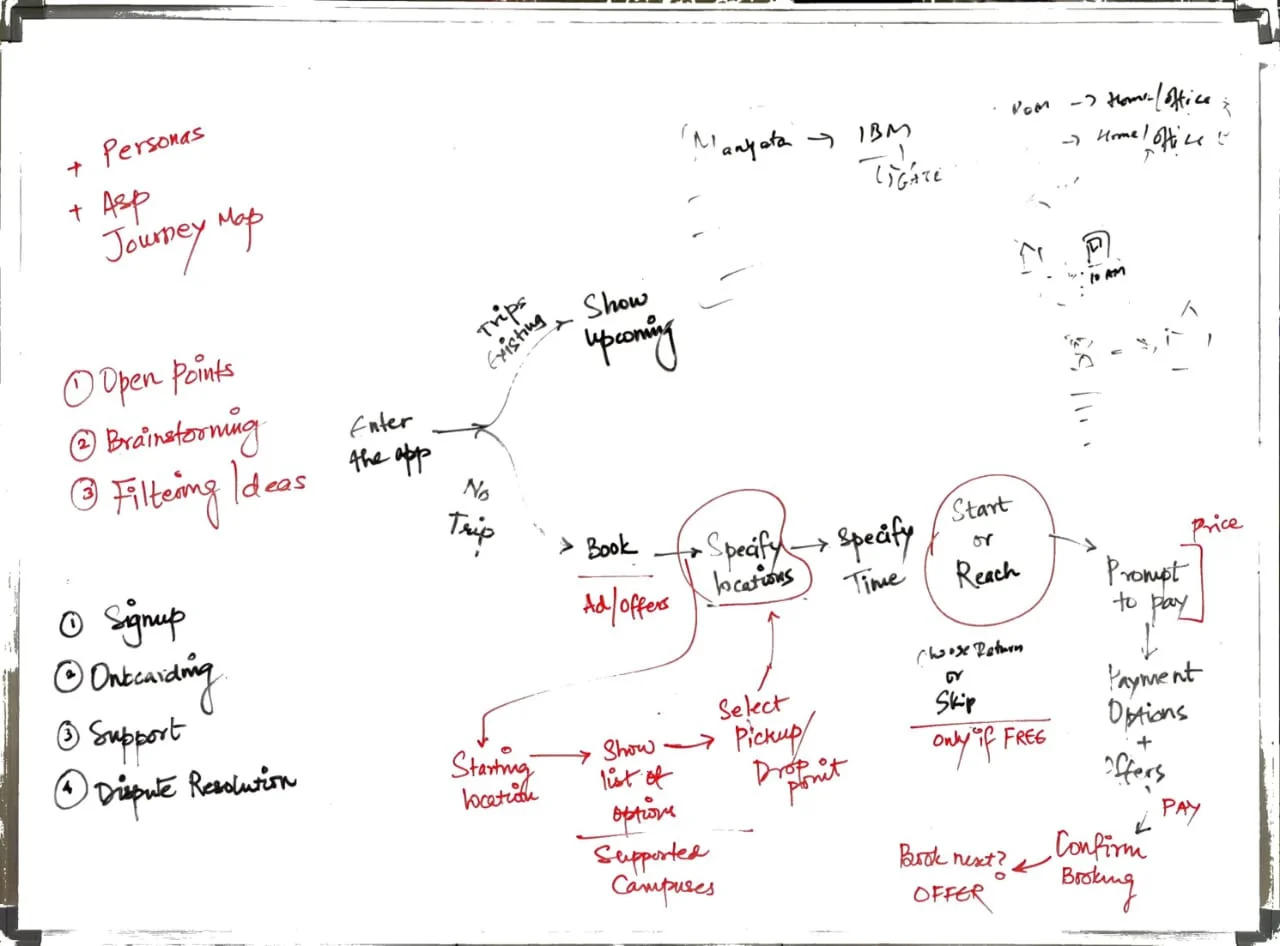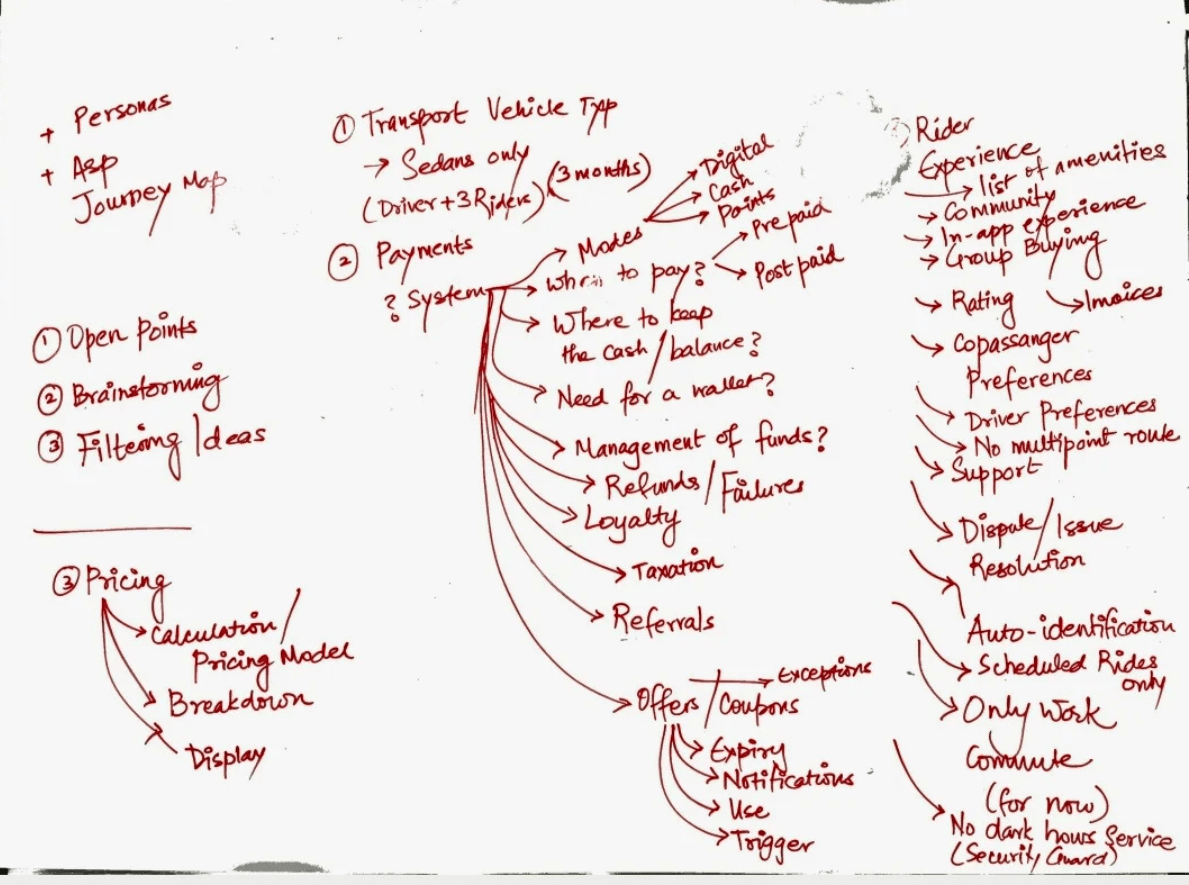A B2B LEADER EYES THE B2C MARKET
NEW PRODUCT INTRODUCTION CASE STUDY
THE ASK
How can we tap into the B2C market with our B2B strengths?
In 2021, the founder of one of the country’s leading employee transport companies realized that the B2B business could be the base for a strong B2C offering.
But his team had only worked in corporate transport space, and were unsure about how to approach the B2C space. They needed help for New Product Introduction.
THE CONTEXT
The year 2020 was brutal for all firms that worked with corporate offices.
It was no better for them.
The company’s core business was employee transportation. Many of India’s leading companies deployed their cabs to facilitate employee pick-ups and drops across most of the major IT hubs. They had built a strong foundation of reliability over the years.
But now, things look different.
Post the pandemic, employers were expected to offer employees more flexibility to choose when they wanted to work from office. This would drastically affect the employee transport business.
The Diagnosis
A strong dedicated team who could drive business with the right direction
Company Strengths
Employee transport is an operations heavy business. Any cab being late leads to complaints, and may have affect other scheduled pick-ups and drops. Employees do not want to earlier than required or take circuitous routes to pick up others in the cab. At the same time, traffic in major Indian cities meant that it was difficult to schedule cabs on time.
Through years of operations, the team had built routing algorithms, processes and human expertise that helped them navigate the chaos.
Target market
The B2C people movement through cars is largely of two types:
- Immediate commute
- Planned commute
Uber and Ola are major players in the immediate commute industry, which can be quite complex. The origin and destination of the traveler are not predetermined. Therefore, the system must ensure that there are enough taxis in the area to pick up the traveler promptly. Calculating the correct surge price is also essential, taking into account congestion, to ensure that both the driver and the traveler are satisfied with the pricing.
The planned travel space, while smaller, skirted a lot of these issues.
The concept of planned commute involves working backwards from the desired arrival time to determine the departure time. This method of travel planning allows for easier availability of taxis, congestion prediction, and the potential for carpooling. By planning ahead, travelers could ensure a smoother journey to their destination.
The company wanted to play in the planned commute space. The existing market largely revolved around travel to the airport.
NEEDS ASSESSMENT
Using the Salient Product Strategy playbook, we quickly analyzed the proposed business. A few points that emerged were:
Market trends were in favor of a solution like this, as a significant portion of employees would continue working from home a few days a week
Companies were looking to reduce costs, and leased transport was likely to be a candidate
The company had a set of strengths that could be leveraged for planned travel to office and home
The technology backend was in place and could handle new product extensions. There were changes in payments, front-end related changes and policy changes that were required
We also identified some gaps that needed a fix:
The team was accustomed to sell to transport facility managers. They needed better awareness of core commuter needs.
The team needed to think about business fundamentals like charging per trip, cancellation charges
The user experience was not designed for B2C commuters
We needed more marketing to get the product live.
We now knew what needed to be fixed for the product launch. The team had the budgets in place, and were well-intentioned, so we began the journey by setting a target launch date and working backwards.
THE ENGAGEMENT AND OUTCOMES
Launch A New Brand & Product
Since we were looking at the B2C market, we started off with customer research using the Salient Qualitative Research Guide with employees.
Over a course of discussions, a few things became clearer:
- Employees too expected flexible transport options and were willing to pay as long as they got reimbursed (if they were taking office transport earlier)
- Most preferred not going in to office on Mondays (the long weekend effect)
- Many wanted to go on Fridays, as they felt they could use the second half to bond with others socially.
- Younger non-partnered employees wanted the flexibility of choosing another drop location on Friday evenings, as they often made plans with friends during the day
- Employees with smaller kids were particular about the time they got home. They felt guilty about leaving their children. This played out a lot more during the return commute as they imagined kids eagerly waiting for them.
- Most employees planned the next day travel in advance. It was important for them to know when the cab would arrive so they could plan their mornings.
- Driver cancellations and surge pricing were, not surprisingly, universally abhorred. Stress mounted when employees saw taxi cancel their rides as it would throw their plans awry.

We also conducted qualitative research with corporate transport managers and facilities managers. Some key points from the research were:
- Transport managers liked the idea of allowing flexibility for employees to choose transport
- They were always at the receiving end when employees were delayed due to traffic. To avoid this, they scheduled pick up timings well in advance to ensure employees reached office on time
- They were always worried about employee safety (especially women) as long as they were in company cabs. If there was any untoward incident, there would be reputational risks for the company.
- They felt they would be able to reimburse employees as long as bills were presented monthly and from a single operator.

The existing app had a functional design, but it wasn’t suitable for B2C business.
We began the process by listing out key customer asks and constraints from the business side. We prioritized these based on the Salient Prioritization framework to identify high-impact ones for the first release.
Commuter ask
- Guaranteed service and no surge pricing
- Guaranteed arrival time at office during morning commute
- Ability to choose which days to go to office (and cancel if plans change)
- Advance notice on when to leave home in the morning
- Sensible routing to reduce time on road
- Ability to let managers know in case of unexpected delays well in advance
- Flexibility for drop locations in the evening
- Ability to consolidate bills for reimbursement
- Ability to reschedule drops from office (in case meetings spill over)
- Preferred co-passengers
- Preferred driver and route
- Planned travel to airports and railway station from home or office
We also sketched out asks from transport managers for the service
Transport managers’ ask
- Ability to track (with employee permission) employee location during travel
- Arrival schedules in advance (to facilitate movement within gates)
- Monthly consolidated bills for employees (in case of reimbursement) along with no-show reports
Based on these and business constraints, we took a few decisions on the product experience.
Fleshing out product experience
- Ability to track (with employee permission) employee location during travel Lock the booking window 4 hours before evening return travel to allow for planning Lock the morning booking window the previous night at 8pm. This would allow users to plan in advance, but also allow the operations team enough time to schedule cabs.
- Allow changes in booking for afternoon drops up to 4 hours in advance
- Notify morning pick-up time by 10pm the previous night so commuters can plan their schedule better. Present this as a 15 min range where they need to be ready
- Recommend nearby pick-up points that would reduce travel time for commuters along with an estimated savings of time
- Login using official email id. This was a critical decision as we wanted this to be restricted to office goers to keep travel safe.
CUSTOMER JOURNEY MAPPING
As the next step, we worked on a revised customer journey mapping. Due to confidentiality reasons, I will not be sharing the revised journey. A couple of sketches are shared below as reference.

Initial sketch for the revised customer journey

Initial sketch for parts of the experience
LEARNING LAUNCH - INITIAL GTM
As part of the GTM process, we worked on various elements while the app was being developed:
The product was designed for employees who would come to office only a few days a week. After a bit of brainstorming, we hit upon the Value proposition.
Core Value Proposition: Commute that suits your hybrid workstyle.
The core proposition was that the service was affordable, predictable and guaranteed.
Other value messages included:
- Easy commute planning: Ability to pre-book rides and reschedule with ease.
- Premium service at not-so premium prices: No surge pricing. We offer shared rides with commuters working in the same business park
- Verified co-travellers: No surprise pick-ups or detours along the way.
After some initial discussions about using wallets, we decided to go with standard billing engines. This would let us focus on the core value for the launch and add this as an option later.We also baked in support for coupons, offers with expiry dates with an option to offer referral options in future releases.We decided to go for a slab based pricing depending on distance traveled to office. By having slabs for distances, we could offer discounts to those traveling from further away and also plan routes better.
We also decided to ask for payments for rides in advance. In case commuters cancelled their bookings after the cab was allocated, there would be no refunds. We did allow them to call the call center and ask for a refund as an exception.
Note: The exact details are not shared for confidentiality reasons
We picked a few business parks in Bangalore for the product pilot.
As part of the onboarding process, we had:
- Stalls set up in the lobby for awareness
- Special coupons for first ride (pay for trip to office, get return free) to let users experience the service
- Website with FAQs
- Call center briefed with details of the launch and with freedom to offer refunds for genuine cases
Teams manned the stalls for a week, and it was also a great medium to get feedback on the service. The feedback on the app’s features was positive, though we realized we needed to work on the operations to deliver the promise.
Key insight:
While the service was planned around longer commutes to work, employees staying within a 2km radius of office found it difficult to find transport. They preferred if we had a specific option for them. This led to the company exploring the use of electric autos for short-distance commutes.
The process helped us get a lot of the assumptions validated. The product was launched in 2021 and is used by thousands of employees today.
Through the process, the company’s team also built their processes on handling B2C products which aligned with their core strengths.
www.shrinathv.com

